The perfect weekend break in Florence

Firenze, the cradle of the Renaissance, is one of Europe’s great art cities. With frescoes by Giotto and Ghirlandaio, canvases by Botticelli and Bronzino, and sculptures by Michelangelo and Giambologna, there is so much exquisite art and architecture within its ancient walls that it’s easy to become overwhelmed.
But, there is more to handsome Florence than just museums and monuments. It is bursting with quirky shops and quality crafts; a living city with an eclectic cultural life that embraces opera, classical music and contemporary art. The restaurant and nightlife scene is also very much thriving. Escaping for some downtime is rather convenient, given the city's proximity to the vine-covered hills of Chianti, as well as other Tuscan art towns such as Arezzo, Siena and Lucca. Florence's diminutive size means everything is very accessible, with most of the main sights lying within walking distance of one another. All in all, this is one of Europe’s most civilised long weekend destinations.
And for more Florence inspiration, turn to our guides on the city's best hotels, restaurants, nightlife, attractions and shopping.
In this guide
What's new in Florence
Get a fresh look at the city from the Vasari Corridor
When it was constructed in 1565 by architect Giorgio Vasari, the Corridoio Vasariano provided Cosimo de’ Medici with a fast, safe and private route to his residence in the Pitti Palace and the Uffizi Gallery. At one point it became a picture gallery, and was only available to private groups. But in 2025, it will reopen to the public. Passing over the top of the Ponte Vecchio, it offers unique views of Florence and the river Arno. The entrance ticket (£36) includes the Uffizi Gallery; booking is essential.
Venetian cooking lands in Florence
For fans of small bites – and more specifically small Venetian bites (aka cicchetti) – colourful newcomer Il Bacaro Fiorentino is a must. The menu features traditional dishes from the lagoon such as baccalà mantecato (creamed salt cod), polpo and sarde in soar (octopus and sardines) in both cicchetti-sized and larger portions, plus bigoli pasta and other specialities, so you can drop in for an aperitivo or make an evening of it.
See Tracey Emin at Palazzo Strozzi
From March 16-July 20 2025, Fondazione Strozzi’s ever-interesting roster of headlining exhibitions continues with a one-woman show by contemporary (and often controversial) British artist Tracey Emin. Emin focuses much of her work on the body and human relationships using a variety of media (drawing, painting, sculpture, video and installations). In her works, where life and art co-exist, personal stories often become existential metaphors. This will be the London-born artists’ first solo show in Italy and will include both historic and new works.
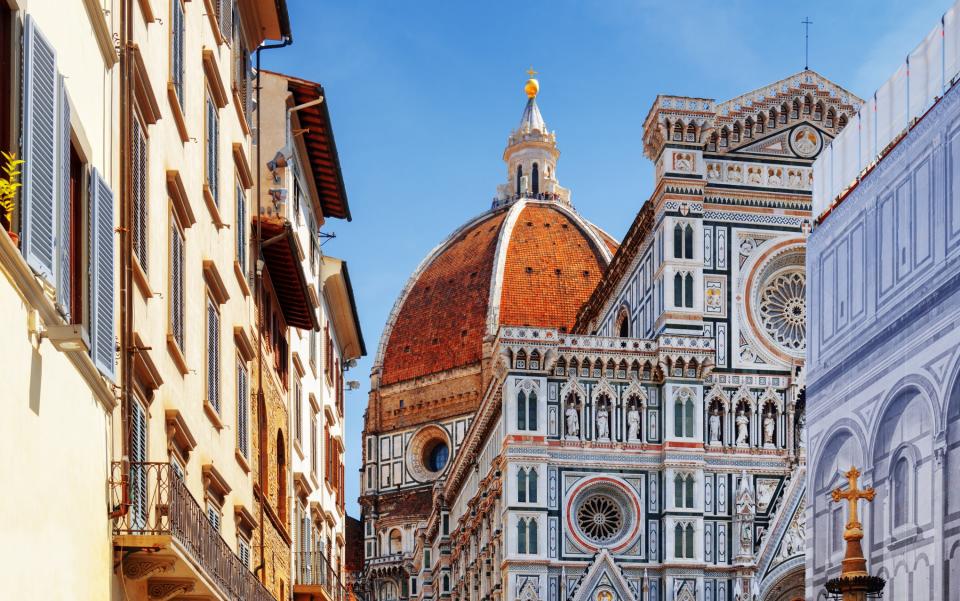
How to spend your weekend
Day one
Morning
Get an early start on your first day to tick off some of the busier sights. To get a feel for the layout of the city, tackle the 414 steps to the top of Giotto’s Campanile (Piazza del Duomo). The bell tower offers magnificent views over the sea of terracotta rooftops in the centro storico, divided by the Arno River.
Back on street level, size up the set piece that is Piazza San Giovanni with the vast bulk of the Duomo, the Baptistery and the Campanile – Florence’s spiritual heart. The Duomo is worth visiting for the sheer size of the place and to climb inside Brunelleschi’s Dome (another 463 steps).
At the southern end of Via Calzaiuoli lies Piazza della Signoria, Florence’s political power hub past and present, with its imposing town hall and monumental statuary. Highlights include Benvenuto Cellini’s Perseus, shown brandishing the severed head of Medusa under the Loggia dei Lanzi.
Take a cappuccino break on the terrace of historic Café Rivoire (recently – and controversially - revamped under new ownership) and brace yourself for what is arguably the world’s greatest haul of Renaissance art at Galleria degli Uffizi. To view the entire collection at leisure, you need at least four hours. Must-sees include the three great Maestàs by Giotto, Cimabue and Duccio, Gentile da Fabbriano’s Adoration of the Magi, the Botticellis and Caravaggio’s Medusa. Advance booking is essential.
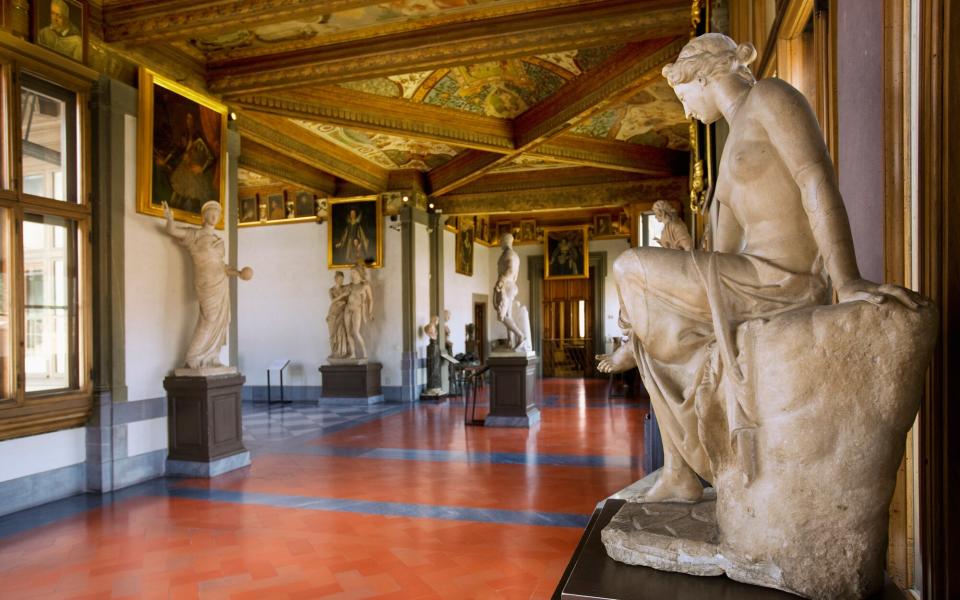
Afternoon
The lunch-only Trattoria Sergio Gozzi lies in the heart of the San Lorenzo market area. The pasta with ragù, ribollita (a bean and bread soup), stuffed rabbit and Florentine tripe are cheap and authentic.
Skip dessert and head over to the Mercato Centrale, housed in a 19th-century iron and glass building. The ground floor is filled with traditional produce stalls, but the first floor has been transformed into a food hall laid out with stalls selling a staggering array of top-notch produce from all over Italy, including melting, ricotta-filled Neapolitan sfogliatelle from master baker Sabato Sessa whose family opened their first pastry shop in Naples in 1930. The stalls set up outside around the market building sell leather goods and other knick-knacks; prices are cheap, but don’t expect the quality to be the highest and do be prepared to bargain.

One of Florence’s best kept secrets is just around corner in Palazzo Medici-Riccardi; the tiny Cappella dei Magi (Via Cavour, 3) is decorated with top-to-toe frescoes by Benozzo Gozzoli. A gentle boat tour along the Arno in a traditional wood barchetta – with prosecco aperitivo – is a relaxing way to end a busy day and offers an unusual perspective on the city. The tour starts with a guided walk from Piazza della Repubblica to the waterfront. Advance booking recommended.
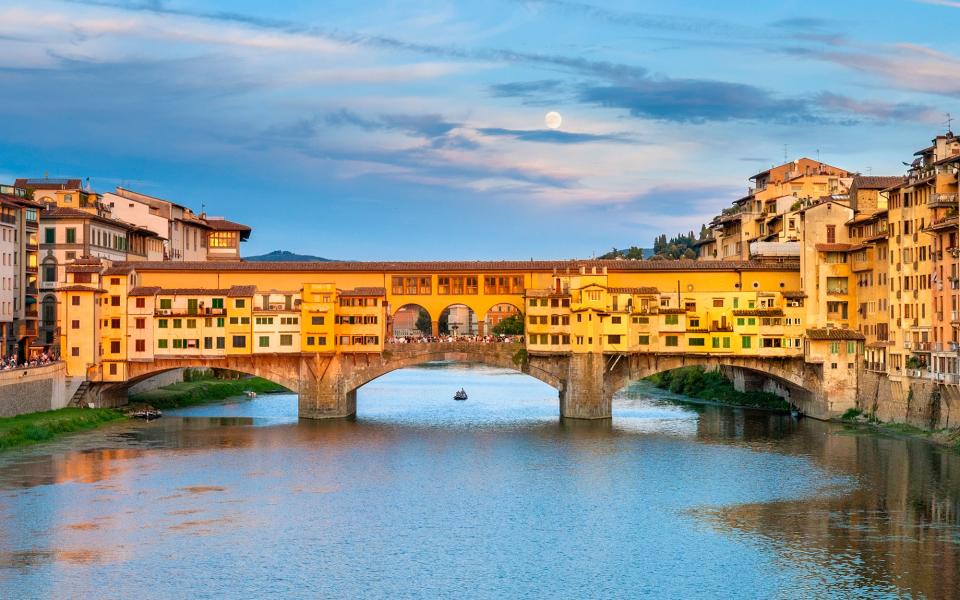
Late
For a taste of Old Florence, head to the Sant’Ambrogio market area and Trattoria Cibreo. The polished take on gutsy local dishes such as chicken liver paté on toast, ‘baccalà’ (salt cod) with potatoes and leeks ‘au gratin’ and chicken and ricotta ‘polpette’ in tomato sauce will set you up for the next day’s sightseeing. Don’t leave without trying at least one of the famous desserts; cheesecake with bitter orange marmalade and the flourless chocolate cake are both legendary.
Wind up the evening with a nightcap in Santa Croce. The neighbourhood comes alive after dark with studenty drinking dens and small clubs, but Locale, with its mod-Renaissance décor, craft cocktails, late-night tunes and smartly dressed clientele, offers something altogether more sophisticated.
Day two
Morning
Start the day by the statue of master jeweller Benvenuto Cellini in the middle of Ponte Vecchio. This ancient bridge may feel like tourist central in high season, but it has been a hub for small jewellery shops since the 14th century. Lovers of bling will be dazzled by the treasures on offer and competitive gold prices. Avoid the mass-produced stuff and seek out Fratelli Piccini at no. 21/23R where the jewellery is still made on site, and Dante Cardini, established in 1988, at no. 34.
Head south across the bridge to Oltrarno (literally ‘beyond the Arno’), a beguiling area of grand palazzi, cobbled streets, quirky boutiques, artisan workshops and trendy cafés and restaurants. Pop into Madova to stock up on exquisitely made gloves. Art hounds should check out Pontormo’s masterful Mannerist Visitation in the tiny church of Santa Felicità before heading up the steep and winding Costa San Giorgio.
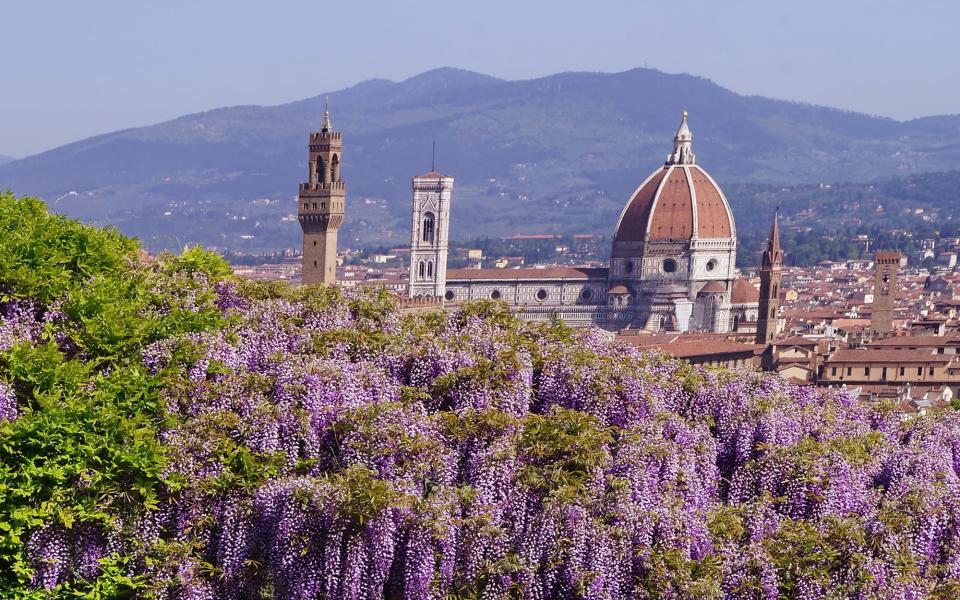
Almost at the top is the Bardini Gardens, which offers fabulous views over the city. A little further lies the Forte di Belvedere, the fortress built by Ferdinando dei Medici, now a temporary exhibition space and popular hangout for young locals. Here, the view stretches beyond the cityscape into the rural Tuscan idyll of villas, walled gardens and olive groves.
Refuel at Le Volpi e L’Uva, a wine bar known for showcasing small, under-the-radar producers from all over Italy. It’s the perfect spot for a cheese and pancetta-topped crostone (toasted sandwich) and a glass of something interesting.
Afternoon
En route to the eastern reaches of the Oltrarno, you can take in the bucolic Boboli Gardens, central Florence’s largest green space with fountains, grottoes, quiet walkways and lichen-covered statues. Be sure to use the quieter Annalena entrance on Via Romana.
The pretty Piazza della Passera lies at the heart of what is known as Florence’s artisan quarter, and is home to hole-in-the-wall Gelateria della Passera where Cinzia Otri has won many awards for her creations that include classics - coffee, chocolate, almond and so on - along with more creative numbers such as Mojito and Fatal Attraction, a yoghurt and apricot mix garnished with glazed apricots and white sesame seeds.
The narrow, cobbled streets around the square are lined with the workshops of skilled craftsmen, dating back to the mid-16th century when the Medicis moved into nearby Palazzo Pitti. With them came the cabinet makers, seamstresses, bookbinders, gilders and furniture restorers. You can visit many of the workshops to see today’s artisans in action during shop hours (Mon-Fri 8.30am-12.30pm and 3-6pm, but hours can vary) as long as you don’t get in the way.
Nearby Piazza Santo Spirito, which hosts a small daily market, is the centre of the boho-chic Oltrarno; the eponymous church, with its blank facade, was Brunelleschi’s final, unfinished work and has a serene, beautifully proportioned interior.
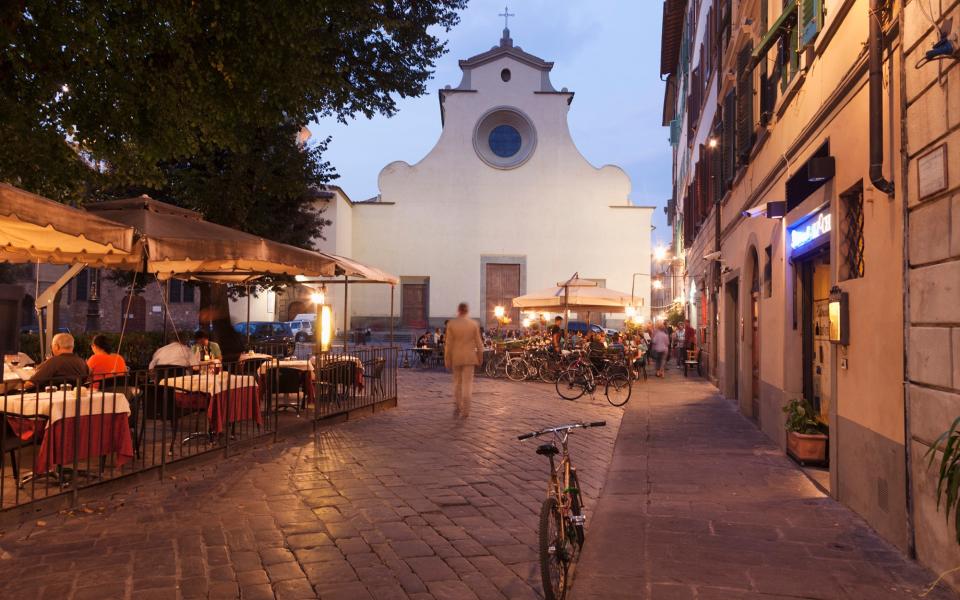
Late
Il Santo Bevitore is a vaulted, wood-panelled restaurant hugely popular with both local foodies and clued-up tourists, so booking is essential in order to taste the mod-Tuscan cuisine: mushroom risotto with guinea fowl and blackcurrants and roast suckling pig are musts.
Piazza Santo Spirito is also a popular year-round hangout for late-night drinks and music. Linger in the square to catch an al fresco gig in the summer; when the temperature drops, go for a drink at Volume, an inviting café-bar with vaulted ceilings and plenty of books.
Insider tips
Parking
If you are arriving by car in Florence, parking can be a nightmare and impossible in the city centre unless you are prepared to pay the inflated private garage prices (often €35 per 24 hours). A much cheaper alternative is to leave your car at the huge, safe Villa Costanza car park to the west of the city and hop on the T1 tram which whisks you into Santa Maria Novella train station town in 22 minutes. The charge is a mere €7 for 24 hours.
Neighbourhood watch
Smack in the centre of the city, Via della Spada and the surrounding lanes is a mix of trad trattorias, chic bars, neighbourhood grocers and independent boutiques. Look out for the unusual, eclectic stock at interiors store Mio, the amazing selection of socks for men and women at Gallo, and exquisite scarves and shawls in cashmere and silk in Faliero Sarti. Then pop into the Museo Marino Marini to see the Tuscan sculptors’ striking horses and many other works. Enoteca Bellini is a good spot for a glass of something restorative.
Aperitivo
For some of the best close-up views over the city’s red roof tiles (if you want to avoid the claustrophobic climb up Giotto’s campanile), head to one of the hotels with rooftop bars for a sunset aperitivo. Our favourites include Panoramic Bar (Antica Torre Tornabuoni 1), Angel Roofbar (Hotel Calimala), La Terrazza (Hotel Continentale), the Butterfly Terrace (Hotel Il Tornabuoni) and the wonderful loggia of Palazzo Guadagni. Or take the lift to the magnificent fifth floor terrace of the Caffè del Verone at the Museo degli Innocenti (open daily until 9.30pm) for your Campari Spritz-with-a-view.

Attractions
State museums all over Italy (in Florence this includes the Uffizi, the Accademia, the Bargello, the Pitti museums and the Medici Chapels) are free on the first Sunday of every month. The good news is that you save the admission charge: the bad news is that queues are endless.
Hotels
Swimming pools are a rare feature of Florence hotels, but hip, stylish Riva Lofts, a converted workshop complex on the south bank of the Arno in the western suburb of Isolotto, has a fabulous little lap pool set into a smooth lawn in its riverside garden. And it’s only a 10-minute ride from the Ponte Vecchio on one of the hotel’s vintage bikes.
Street food
For Florentine-style street food, stop at a traditional tripperia stall for a portion of tripe or a panino with lampredotto (cow’s stomach lining), both local delicacies. There are tripe stands in Piazza Ghiberti, under the Loggia del Porcellino (via Por Santa Maria) and in Via dell’Ariento (near Mercato Centrale).
When to go
Florence is lovely from late spring through to early autumn, when balmy temperatures, al fresco eating and drinking and a busy open-air arts and concert season make this one of Italy’s most vibrant summer destinations. However, this is also the most popular period, when hotel rates are at their highest and the queues for the Uffizi Gallery are at their longest. If Florence often roasts in July and August, it can also get bitterly cold in winter – but if you don’t mind wrapping up, January and February are delightfully uncrowded months when you can often find serious accommodation bargains.
Music lovers should check out the schedule of Florence’s world-class classical music and opera venue, the Teatro del Maggio Musicale, before planning a trip; it’s also worth glancing at the exhibition calendar of dynamic arts centre Palazzo Strozzi, which puts on some top-flight shows.
Where to stay
Luxury living
Hotel Lungarno offers an unbeatable location right on the Arno, steps away from Ponte Vecchio with in-your-face river and bridge views from the public areas and the best of the bedrooms. Expect five-star service, nautical-chic décor and gourmet dining.
From
£353
pn
Rates provided byBooking.com
Boutique beauty
AdAstra enjoys a privileged setting in one of the city’s great private gardens. The classy, comfortable and highly original hotel has the feel of an aristocratic private apartment, replete with vast chandeliers, fine stucco work, antique furniture and fresco paintings. Each room carries a different theme but all are quite lovely.
From
£149
pn
Rates provided byBooking.com
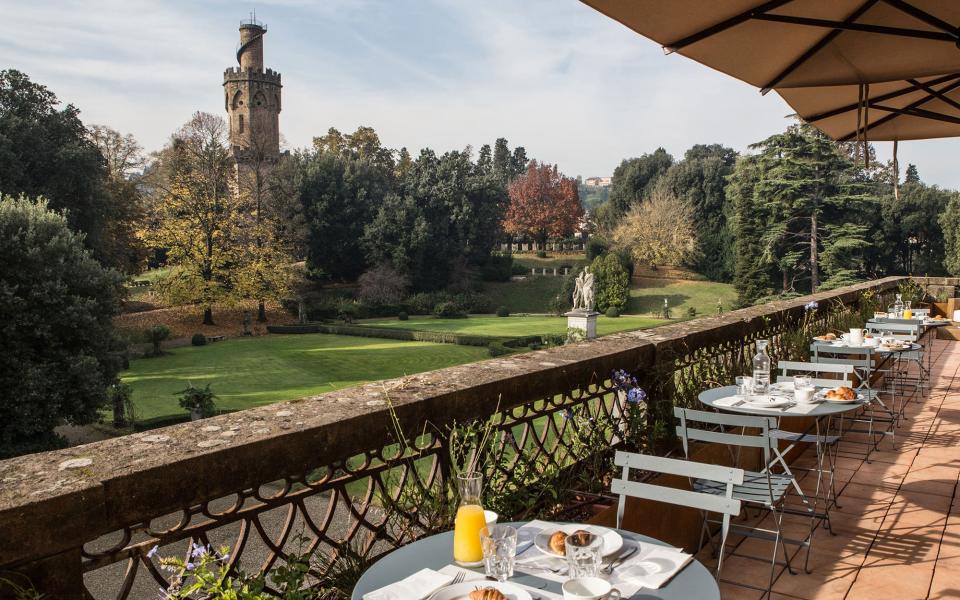
Budget bolthole
A little way from the city centre but steps from a tram stop with connections to the station, the recently renamed Social Hub (ex-Student Hotel) was designed with the international student community in mind, but caters for a much wider clientele: it has fantastic facilities for a budget choice including a rooftop pool, multiple eating and drinking options, a hairdresser and a buzzy, hip vibe. The bright, contemporary bedrooms are functional yet comfortable and come with fridges and Nespresso machines.
From
£78
pn
Rates provided byBooking.com
What to bring home
Florentine artisan Angela Caputi’s trademark costume jewellery is inspired by vintage Hollywood; chunky necklaces, earrings and bracelets in resin, plastic and crystal are all on sale in her flagship studio-shop in the Oltrarno.
The very best Biscotti di Prato (hard almond biscuits) are made to an original recipe by Antonio Mattei and come in stylish, souvenir-ready blue bags.
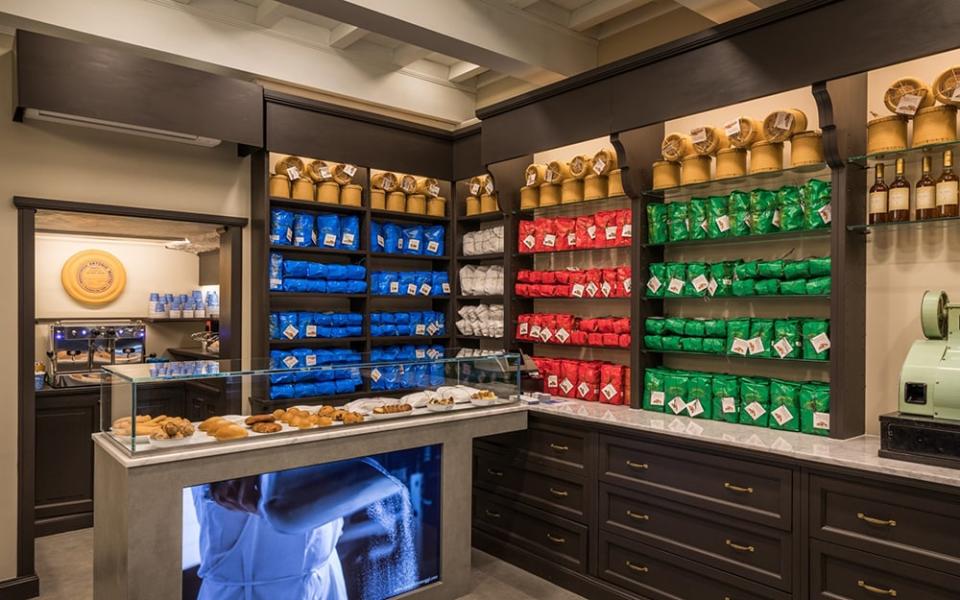
Know before you go
Essential information
British embassy in Rome: 00 39 06 4220 0001; gov.uk
Tourist office and information: The main tourist information office is at Via Cavour 1r (00 39 055 290 832, firenzeturismo.it). Open Mon-Fri, 9am-6pm. There are also branches at the train station and the airport. You can also visit city council-endorsed destinationflorence.com, a one-stop-shop where you can book hotels, museums, restaurants and tours of the city
Emergency services: Dial 112 (Carabinieri); 113 (state police)
Local laws and etiquette
Drivers are required to keep a reflective yellow/orange bib inside the car, to be worn if they break down or have an accident on a busy road and need to get out of the car (they come as standard with hire cars). When driving outside of built-up areas, you are legally required to keep your headlights on at all times, even during the day.
If you’re invited to dinner, flowers or chocolates for the hostess are a more usual gift than a bottle of wine. Don’t take chrysanthemums: they’re for graves.
The basics
Currency: Euro. Most cashpoint machines work with international cards, via the Cirrus circuit
Telephone codes: Dial 00 39 055 for Florence numbers from abroad, 055 from inside Italy
Time difference: +1 hour
Flight time: London to Florence or London to Pisa is around two hours
Addresses: Florence has a confusing dual numbering system consisting of red numbers for shops and business concerns, and blue (or black) ones for houses and hotels. The two systems are entirely independent; so number 27 blue might be next to number 8 red. The local convention (followed in this guide) is to put a small r (for rosso) after red numbers, and leave blue numbers alone: thus 27 is a blue number, while 27/R is red
About our expert
Nicky has lived in the city since 1981 and was an orchestral musician in her past life. After tasting bruschetta – drizzled with peppery, freshly pressed Tuscan olive oil – in Florence for the first time, she’s never looked back.


